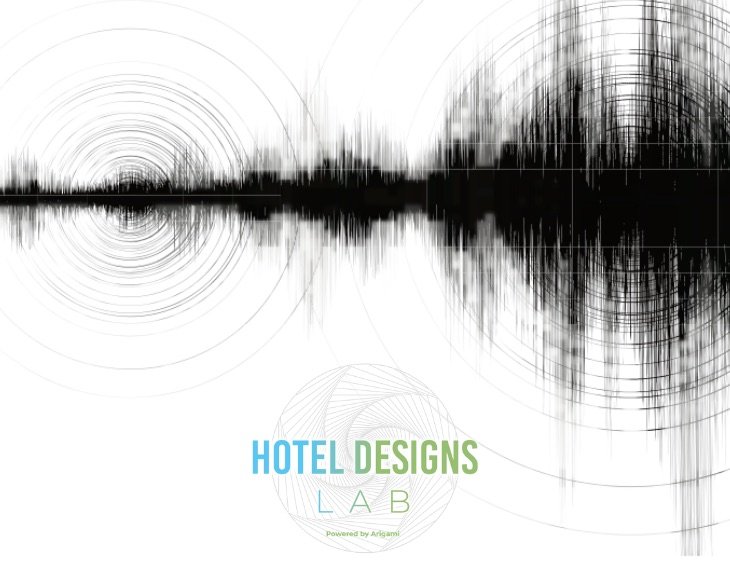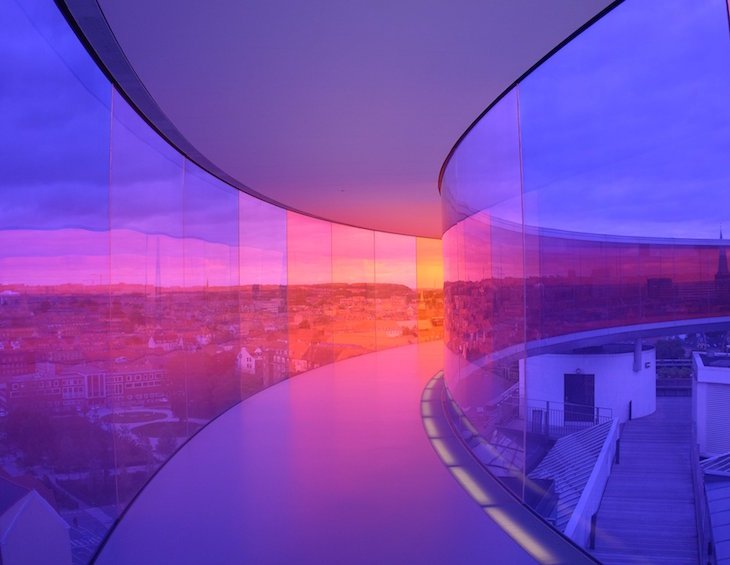Discover the science & tech behind today’s sensory hotel experiences.
Arigami partnered with Hotel Designs to produce a series of thought-leadership articles ‘Hotel Designs LAB’ developed to challenge the conventional hospitality landscape and, in the process, empower interior designers, architects, hoteliers, developers, technologists and hospitality brands.
Hotel Designs Lab
Circadian Lighting | Rethinking Time & Light
Circadian lighting and science is shaping the way in which hotel buildings are created and designed. Inside, lighting is altering how guests use and journey through spaces, as well as how they experience wellness. In our latest article in the Hotel Designs Lab series, Ari Peralta, Founder of Arigami, interviews Dr. Helga Schmid, circadian artist and author. Over the last 15 years, there has been a substantial growth in our understanding of circadian science and human chronobiology. New scientific insight continues to transform the way in which we create, engage with and appreciate lighting itself. In contrast with our always-on society, Dr. Helga Schmid’s work invites guests to slow down, disconnect from the burden of time and realign with nature’s flow.
Hotel Designs Lab
Sound Design (Sound Spatialisation & Noise Control)
The industry’s approach to sound often focuses on the content sound, culminating in generic music playlists being played in any given zone. By designing for, and working ‘with’, sound as it interacts with materials, shapes, technologies and other senses, we can create hospitality environments and sonic spaces that contribute to the positive health of travellers globally. Recognising a need for a new way of integrating sound into hospitality design, we spoke to Tom Middleton, functional soundscape designer and psychoacoustic expert for Calm; Paul Oomen, founder of the Spatial Sound Institute and professor John Drever, sound practice research at Goldsmiths University, who each acknowledged the importance of sound from the start of the design process.
An interdisciplinary approach to sound
Sound and our body
Sound and perception
Sonic strategies to promote guest wellbeing
Hotel Designs Lab
Safe Design & Emotional Wellness
The industry’s definition for ‘safety’ has drastically changed in recent months. What started out as an effort to provide a physical environment, free of hazards, has significantly evolved into a multi-tiered definition that includes security, data protection, privacy, and sometimes even anonymity. Recognising the broader need for safe design, we’ve integrated psychological, emotional and technological insight into hospitality design. We spoke to Dr. Jancy McPhee, neuroscientist at NASA Human Research Program and Dr. Francisco Teixeira, neurofeedback Technologist MuArts. Both of them helped us shape our article with the aim of unlocking key actionable design insights.
Together in this article, we have explored:
Safety and Psychology
Safety and Emotions
Safety and Technology
Hotel Designs Lab
From Living Walls to Living Hotels
Biophilic design is much more than adding plants to a space, it is a strategy for developing a multi-sensory relationship with the world around us. It is at the cross-section between the sustainability movement, wellness and human-centered design. It refers to the design practice of connecting people and nature within our built environments and communities.Helping us unfold the current practice of biophilic design and identifying barriers to implementation are biophilic designer Oliver Heath, and environmental psychologist and researcher Nigel Oseland. Each of them helped us shape our article with the aim of unlocking key actionable design insights.
Together we explored:
Biomimetic Architecture
Sustainability and Wellbeing
Affective Response to Architecture
Technobiophilia
Hotel Designs Lab
Wellness Dining: From Indulgence To Purpose
Guests are actively pursuing products, places and experiences that encourage wellbeing and healthy outcomes. Wellness dining is quickly becoming a strong part of that ethos, with more hotel brands pivoting towards a greener and more nutritional approach to their F&B operations. Wellness is a state of optimal health that is based on maximising human potential. Our bodies and mind, much like our environment, depend on energy. That got us thinking: How can we help transform the industry’s approach to food, by focusing more on intended outcomes? How can we create nutrient-rich offerings that are also tasty and delicious? How can we inspire design to create multi-sensory eating spaces that encourage wellbeing?
In this article, we brought together a dream team of experts covering neuroscience, psychology, gastrophysics, nutrition and the culinary arts. In doing so, we challenged our experts to help us redefine ‘nutrition with purpose’.
Hotel Designs Lab
Art, Technology & Guest Experiences
Technology is shaping the way in which hotel buildings are built and designed. Inside the hotel, technology is altering how guests use and journey through spaces as well as how they view interior design. In our latest article in the Hotel Designs Lab series, Ari Peralta, Founder of Arigami, explores the rise of digital, generative and interactive art; a new genre that has the potential to transform guest experiences.
Over the last 10 years, there has been a substantial growth of culture as an experience. The shift from an analog to a digital society has drastically transformed the way in which we create, engage with and appreciate art. In contrast with more static art forms, generative and interactive art pieces allow viewers to step in, respond to and shape the artwork in their own way, or leave behind a trace of their experience.
Hotel Designs Lab
Using Smart Hotel Design To Support Guest Mental Health & Wellbeing
What does the future of smart hotels look and feel like? Does smart design include wellbeing? How will hotels adapt to an exponentially connected future? Welcome back to our exploratory series Hotel Designs Lab. My innate curiosity for what’s next in human wellness and hospitality design took me in search of outside industry experts and case studies that could potentially answer these questions and provide us all with actionable insight, in particular, for hospitality architects, designers, suppliers and brand decision makers. Each of our articles – from wellness dining to biophilic design and sensory architecture – tackle a complex hotel design topic through the lens of interdisciplinary experts.
With everyone talking about technology, electrification and automation, I wanted to ask experts at the forefront of technological innovation, if this first wave of smart hotel design includes (or can include) a space for smart wellbeing? Pre-Covid, wellbeing and mental health had already become a rapidly expanding field of interest for designers and architects alike. Now, it’s probably easier to ask who isn’t talking about it!







